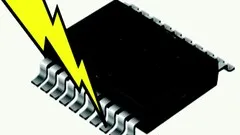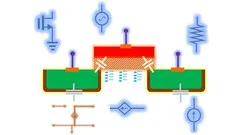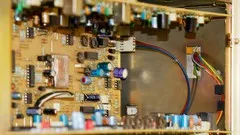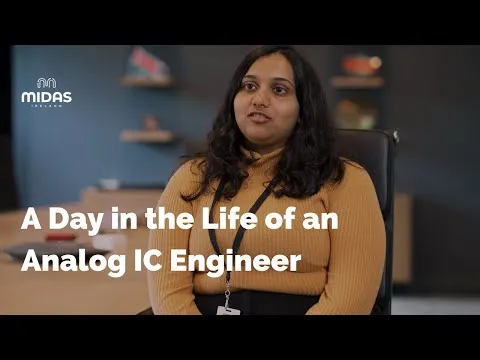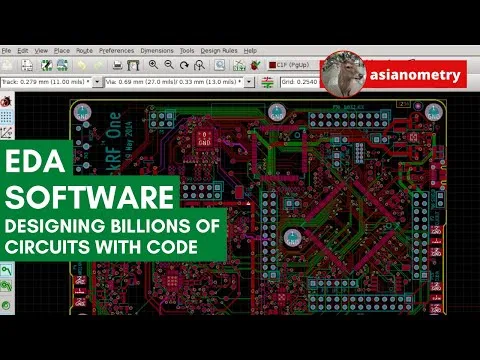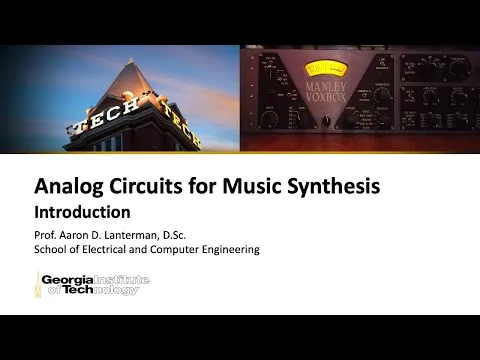Free Online Analog Circuit Design Courses and Certifications 2024
Analog circuit design is the process of designing electronic circuits that use analog signals, which are continuous signals that vary in amplitude and frequency. It involves the use of various components such as resistors, capacitors, transistors, and operational amplifiers to create a circuit that can process analog signals. The goal of analog circuit design is to create a circuit that can accurately and reliably process analog signals.
Popular Courses
Learn the fundamentals of analog circuit design with this free online course! Get an introduction to the basic components and methodologies used for analog design, including OPAMP-based circuits and BJT-based circuits. Receive a certificate upon completion and join the Electronics Geek Telegram Channel for more resources. Sign up now and start learning today!
Learn MoreThe "CMOS Analog Circuit Design" course offers a brief overview of analog IC design, providing a high-level perspective on the subject and discussing the essential requirements for designers in this field. It serves as a quick refresher or introduction to analog IC design, ideal for individuals already familiar with analog circuits and integrated circuit technology. The course consists of 12 lectures, each lasting 15 to 20 minutes, with no quizzes or additional material. Students new to analog IC design can gain an overview of the topic, while those familiar with IC design can use it to update their knowledge in this area.
Learn MoreThis course provides an in-depth look at ESD protection from an analog/mixed signal IC designer's viewpoint. Learn how to efficiently and accurately apply ESD protection, understand ESD influence on circuit components, and avoid common mistakes. With 16 lectures and a quiz following each lecture, this 10-hour course is perfect for analog and/or mixed signal designers. Download the course notes from Dropbox by contacting the instructor at
[email protected].
The "Analog Electronic Circuit Designs In Simple Words" course aims to bridge the gap between understanding concepts and quantifying them mathematically. Unlike traditional courses that focus on solving equations and calculations, this course emphasizes the intuitive simplicity behind circuit design. It covers advanced topics such as latch circuits, frequency domains, low and high filters, and control circuits, which are often overlooked in basic courses. The course efficiently delivers relevant information without unnecessary content, providing a quick and optimized path from basic to advanced knowledge. Designed to be unique and innovative, this course offers great value at a low cost, making it suitable for learners seeking a comprehensive understanding of analog electronic circuit designs in a concise and effective manner.
Learn More"Analog Circuit Design - An Intuitive Approach" is a comprehensive course suitable for learners of all levels. The course aims to simplify complex circuit design by breaking it down into manageable concepts through a "divide and conquer" approach. The main focus is on building intuition and creating mental models for circuits, empowering learners to design, analyze, and solve circuits effectively. The course concentrates on amplifiers, including single-stage and multistage configurations such as Cascode and Cascade. Practical aspects relevant to students and beginners in analog circuit design are discussed, covering quick analysis techniques and case studies for important circuit configurations. The course is designed to be beginner-friendly, but experts and experienced engineers can also benefit from reviewing and refreshing their design concepts.
Learn MoreThe "Analog Electronics - Complete Course (33+ Hours)" is designed for students with a background in Electronics and Telecommunication or related fields. Also known as Analog Circuits, this theoretical and analytical course is tailored for beginners seeking to build a strong foundation in circuit design, logic, and problem-solving. The course covers topics such as Operational Amplifiers, Diodes, and Transistors, with detailed solutions provided for each problem. It is not focused on Digital Design, as that topic is covered in a separate course. The instructor, with over 3+ years of experience and a 4.0 Instructor Rating on Udemy, has developed the curriculum over two years. The course promises to equip learners with the knowledge and skills to handle various problems in Analog Circuits and is suitable for those interested in core electronics and critical projects.
Learn MoreThe "LDO Circuit Design and Analysis: An Intuitive Approach" is a course that focuses on an essential concept for hardware and system designers: the Low Dropout Regulator (LDO). LDO is a cost-effective voltage regulator used to obtain a regulated output voltage from a higher input voltage. The course offers an intuitive approach to managing power and voltage supply for critical analog and digital circuits, particularly in mobile devices. Learners will gain an understanding of LDOs, their operation, important characteristics, and various parameters that influence their performance.
Learn MoreThe "MOSFET: Foundation Course for Analog Circuit Design" is a fundamental course that serves as a building block for analog circuit design. The course focuses on developing an intuitive understanding of the MOSFET device and its theory, which is essential for mastering circuit design concepts. By covering the device physics of the MOSFET and capturing semiconductor theory, the course aims to provide learners with a graphical view and intuition of MOS theory. Small signal modeling is also explored to derive small signal parameters, and sample circuits are solved using graphical modeling. This course is beneficial for students preparing for interviews in analog circuit design or VLSI, as well as professionals in circuit design seeking a review and refresher.
Learn MoreLearn to design analog circuits from scratch with this comprehensive course! Get a strong foundation in understanding, analyzing and designing the analog circuits using the fundamental electronic components such as a diode, transistor and more. Master the basics and build your skills with topics like power supplies, BJT and MOSFET applications, differential amplifiers and power amplifiers. Enroll now and start your journey to becoming an analog circuit expert!
Learn MoreThis course provides a comprehensive summary of topics asked in Analog and RFIC Engineering interviews. With over 10000+ students around the world, this course is designed to help you get your feet in the door and prepare for the most common questions. Learn the fundamentals of RF and Analog engineering with RAHRF101, RAHRF200, RAHRF201, RAHRF152 and RAHRF409. For more advanced topics, refer to our RFCertificate page. Message us if you have any questions related to the topics covered.
Learn MoreGet a comprehensive overview of A Day in the life of an Analog IC Engineer
Learn MoreExplore the essentials of Designing Billions of Circuits with Code
Learn MoreGet a comprehensive overview of ECE4450 L1: Analog Circuits for Music Synthesis: Introduction (Georgia Tech course)
Learn MoreLearn the basics of GATE Series - Analog Circuits
Learn MoreExplore the essentials of Electronic Circuits - Part3: Bipolar Junction Transistors
Learn MoreExplore the essentials of AC Analysis of Semiconductor Devices - I
Learn More Frequently Asked Questions and Answers
Q1: Is analog circuit design difficult?
Analog design is more challenging than digital design because it requires a deeper understanding of the physical world and the interactions between different components. Analog circuits are also more sensitive to noise and interference, which makes them more difficult to design and test.
Q2: What is the fundamental of analog circuit design?
An amplifier is a device that increases the power of a signal. It is the fundamental building block of analog circuit design. To construct an amplifier, one must use a device that can amplify power, meaning that it can be activated by a low-power input signal to produce a higher-power output signal.
Q3: How do I start an analog design?
The first step in any analog design is to create an electronic schematic. This is a graphical representation of the circuit, showing the components and their connections. The schematic is the foundation of the design, and it is used to communicate the design to other engineers and technicians.
Q4: What Analog Circuit Design courses can I find on AZ Class?
On this page, we have collected free or certified 27 Analog Circuit Design online courses from various platforms. The list currently only displays up to 50 items. If you have other needs, please contact us.
Q5: Can I learn Analog Circuit Design for free?
Yes, If you don’t know Analog Circuit Design, we recommend that you try free online courses, some of which offer certification (please refer to the latest list on the webpage as the standard). Wish you a good online learning experience!


